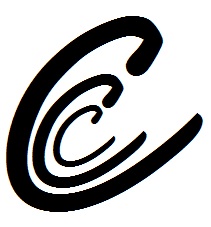
Recently I posted more in depth explanations of the first points 1,2 and point 3 on my original 12 point check list for developing your web presence.
Today, we’ll look more at the fourth and fifth points on the list: the touch points of your platforms and using them to form two way conversation with your fans.
Photo Credit: David JW Bailey
These considerations follow on logically from the previous task of selecting your key platforms. Knowing where you’re going to be expending most of your efforts, you can now decide the ways in which you’ll communicate with fans on those platforms, as well as how to involve them in the process.
In short, this is engagement and interaction time!
Compelling. Concise. Content.

Content is anything from a sub-140 character tweet to an in-depth blog post on your site. To start on the long road to fan engagement, each piece of content needs to be of interest to your target audience. Be it informative, amusing, or something that stirs their passion, hitting the mark consistently (another ‘C’!) is where your content becomes compelling.
Content lies at the core of your web presence. It is the factor that decides whether visitors keep coming back for more, or are uninterested and leave, never to return. The other adjectives really only serve to emphasize key factors in making sure your content achieves the return value that you’re looking for.
Although a given platform will determine the depth of your content (try getting complex in a tweet….ouch!), conciseness will serve you well in almost every piece you post. By all means, explore the intricacies of a topic beyond 500 words in a blog post. Just don’t use a paragraph when a sentence would suffice. Attention spans are short on the web and the average visitor decides in under ten seconds whether or not they will stay.
Having eye catching headlines and visuals to draw people in, followed by the quality content that will keep them interested, is a sure fire way to keep your visitors engaged and coming back for more.
 Join The Conversation?
Join The Conversation?
The cacophony encouraging us to “join the conversation” grows ever louder by the day. In reality, this is a catch all phrase that wants a more general response from us: interaction.
Once engaged by your content and creations, the next objective is to draw a visitor deeper into your creative world. This extends beyond mere discussion, delving into the realms of building emotional connections to your art, gathering feedback, involving visitors in the creative process, adding game mechanics to content, or any number of new and emerging techniques to develop a stronger bond. A bond that, as it builds, turns uncommitted visitors into excited fans of your work.
Although the application of these concepts has the potential to become quite complex, the core idea is simple: offer your fans a compelling, two-way experience with your art, in addition to the traditonal one-way consumption.
How to do this?
Think about what your most passionate fans say about your creations. What do they love about what you do?
For a writer, it could be the characters of your stories that pulls readers into the world you’ve created. How can you give those characters a new lease of life across social media? Furthermore, how can you weave your readers into the story, so that their experience moves from passive to interactive?
For a musician, perhaps your listeners have certain songs that really speak to them. Ask for their interpretations, or comparisons to other artists. Bring to the fore their thoughts and opinions about the subjects of your songs, valuing their additions to the discussion. Fans now create videos and other spin-0ff art in response to their favorite music, so embrace these creations and encourage visitors to pursue their own answers to the questions posed by your songs.
The more that your fans become involved and invested in what you create, the more they’ll support you for the long haul. Sharing as they go, the power of social networks can begin to work for you as your creations are spread far and wide, offering opportunities to repeat the process of engaging and interacting with new fans.
Over To You…
How have you geared your web presence to keep new visitors interested?
Once you have their interest, what steps have you taken to interact with people and turn them into fans of your work?
Your insights are the truly valuable element here. The real world examples are where we really gain an idea of how to put all this into practice, so please feel free to share your own brilliant successes here in the comments or on Facebook.
Leave links so I can visit and put your fan-making process to the test!





Connections